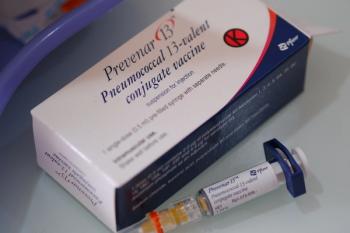
A 'Bad' Flu Vaccine Still Has Valuable Impact on Public Health
A less effective vaccine still benefits public health by preventing some disease and deaths.
Flu vaccines with low effectiveness still have a big impact on population health, according to a
"High coverage, even in the presence of a low efficacy vaccine can greatly reduce the number of incident cases, number of hospitalizations, and the mortality rate from influenza," Burton H. Singer, PhD, of the Emerging Pathogens Institute at the University of Florida tells Drug Topics.
Researchers, including Burton a co-author of the study, examined the impact that flu vaccines with efficacy rates below 40% had on incidence rates, hospitalization, mortality, and disability-adjusted life-years (DALYs). The researchers found that the study's outcomes were more sensitive to changes in coverage rather than changes in vaccine efficacy.
Burton says the research and its findings have important implications for healthcare providers and pharmacists because they show how essential it is to encourage vaccination even in years where the vaccine low effectiveness.
"It is essential that healthcare professionals and pharmacists explain to the public at large why vaccination is important even with a moderately effective vaccine," he says. "Education of the public about the benefits to the individual and the overall population is critically important. It is not enough just to tell people to get vaccinated."
"We found that even relatively low-efficacy influenza vaccines can be highly impactful, particularly when vaccine uptake is optimally distributed across age groups," the authors write. "As vaccine efficacy declines, the optimal distribution of vaccine uptake shifts toward the elderly to minimize mortality and DALYs."
For instance, a flu shot that was 20% effective could avert 21 million infections, almost 130,000 hospitalizations and 61,000 lives, according to an
The authors found that a drop in vaccination coverage from 40% to 20% would lead to 39,738 more deaths if the flu vaccine had a 40% effectiveness; however a drop in vaccination effectiveness from 40% to 20% would lead to 28,343 deaths if coverage was at 40%.
"It helps the individual in terms of reduced severity of illness and it enhances herd immunity. If everyone participates, we all benefit," Burton says.
Flu vaccination coverage for the 2016-2017 season was 46.8%, according to
This latest research into the value of flu vaccinations with low effectiveness is particularly valuable after what turned out to be an aggressive flu season where vaccine effectiveness rates were low. According to
Newsletter
Pharmacy practice is always changing. Stay ahead of the curve with the Drug Topics newsletter and get the latest drug information, industry trends, and patient care tips.




































































































































